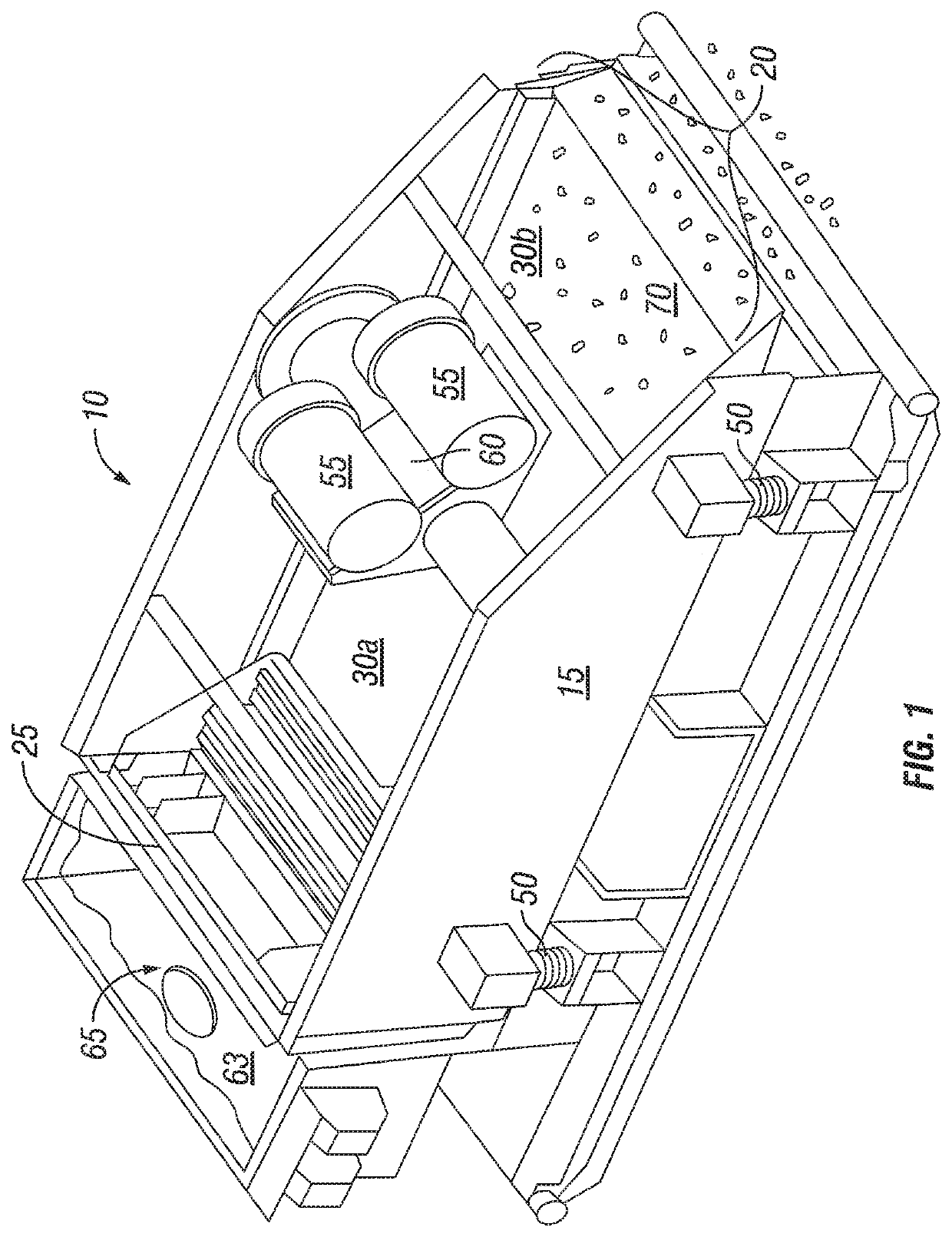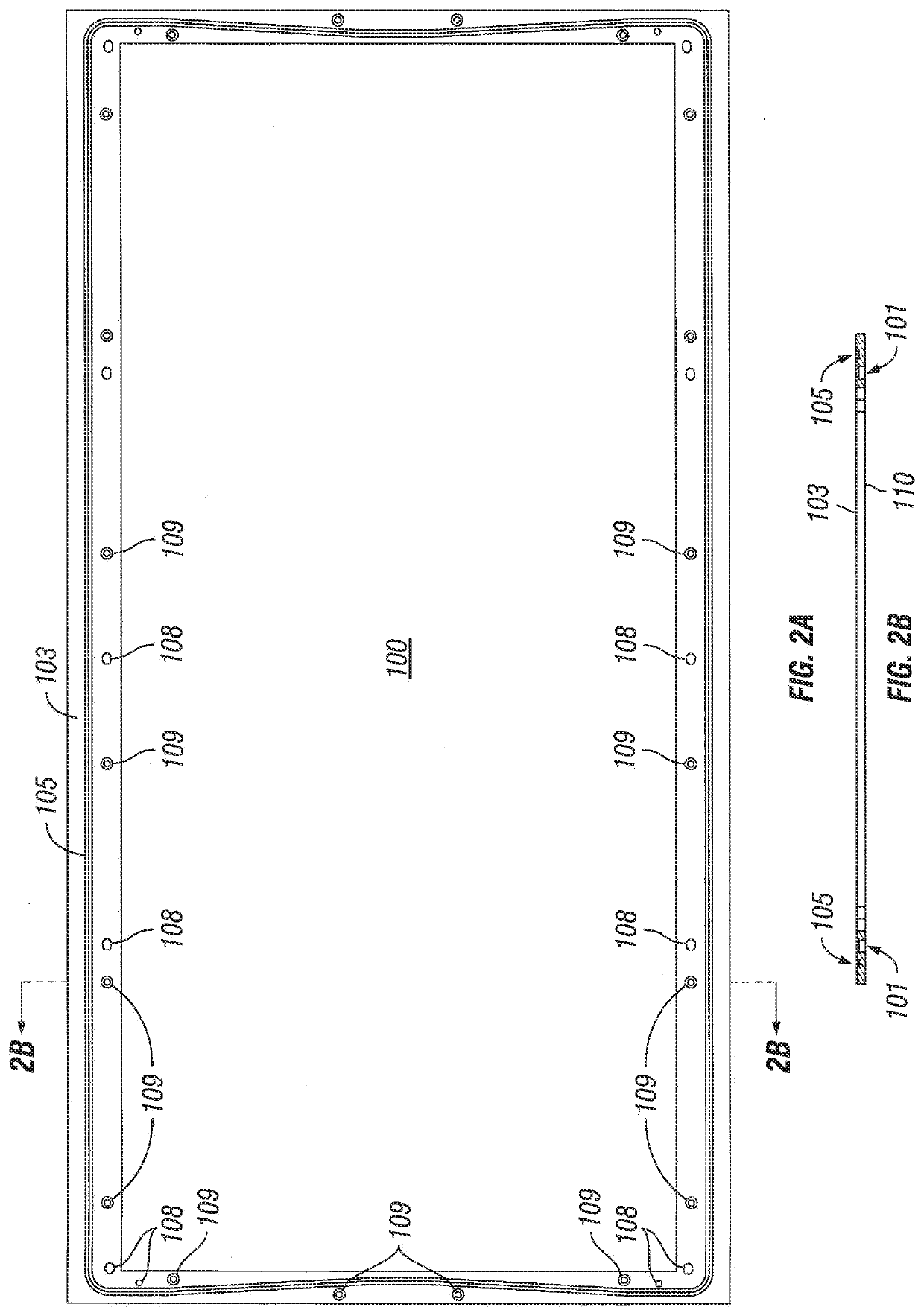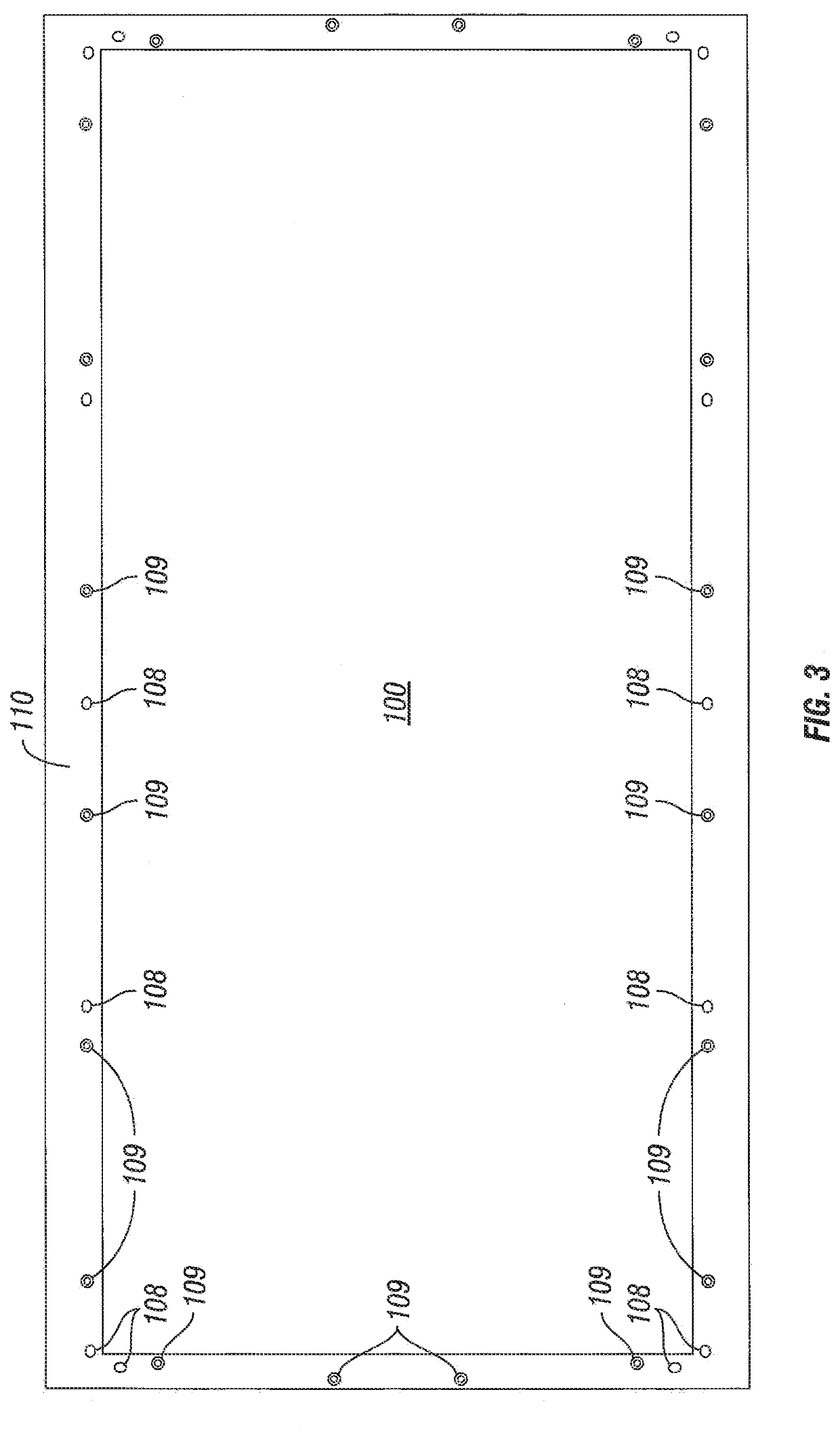Shale Shaker Buffer Wear Item and Method for Use
a technology of wear-reducing barrier and shaker, which is applied in the direction of filtration separation, separation process, borehole/well accessories, etc., can solve the problems of major limiting factor of the integrity and longevity of individual shale shaker functionality, wear, corrosion, corrosion of metal, etc., and achieve the effect of preventing excessive wear of the shaker basket deck flats
- Summary
- Abstract
- Description
- Claims
- Application Information
AI Technical Summary
Benefits of technology
Problems solved by technology
Method used
Image
Examples
Embodiment Construction
[0025]Detailed description of the preferred embodiments of the invention are disclosed and described below. Yet, each and every possible feature, within the limits of the specification, are not disclosed as various permutations are envisioned to be within the purview and contemplation of inventor and understood to those having skill in the art. It is therefore possible for those having skill in the art to practice the disclosed invention while observing that certain placement and spatial arrangements are relative and capable of being arranged and rearranged at various points about the present invention that nonetheless accomplishes to remedy one or more of the infirmities as outlined and discussed above in the field of solids control and management. Patently, the size and shape of certain features may be expanded or narrowed to accommodate each individual shaker basket and may be customizable to suit various and variable screen sizes and shapes while maintaining the underlying funct...
PUM
| Property | Measurement | Unit |
|---|---|---|
| thickness | aaaaa | aaaaa |
| sizes | aaaaa | aaaaa |
| gravity | aaaaa | aaaaa |
Abstract
Description
Claims
Application Information
 Login to View More
Login to View More - R&D
- Intellectual Property
- Life Sciences
- Materials
- Tech Scout
- Unparalleled Data Quality
- Higher Quality Content
- 60% Fewer Hallucinations
Browse by: Latest US Patents, China's latest patents, Technical Efficacy Thesaurus, Application Domain, Technology Topic, Popular Technical Reports.
© 2025 PatSnap. All rights reserved.Legal|Privacy policy|Modern Slavery Act Transparency Statement|Sitemap|About US| Contact US: help@patsnap.com



